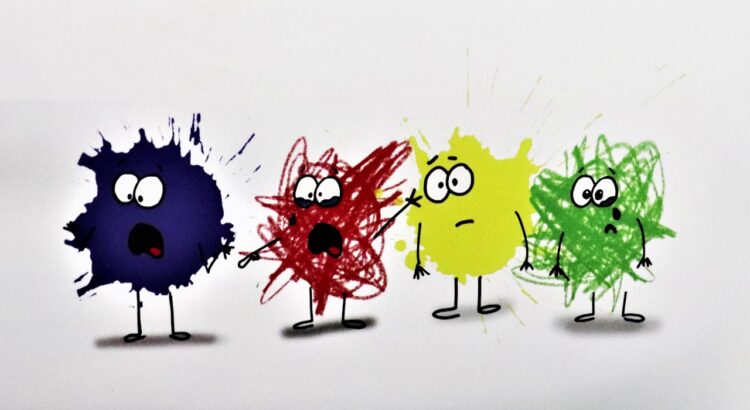Encouraging Young Children to be Creative
Scribbling, or drawing, is an important developmental stage for children aged eighteen months to five years: it is a visual way for them to communicate and interact meaningfully with the adults in their lives, and it also helps children develop their coordination, creativity, and literacy skills.
Children generally go through specific stages as they grow and develop. They roll over before they learn to sit. They creep before they crawl. They walk before they run. It is no different with their art. The first stage is scribbling, then pre-schematic, then the schematic stage.
Growing with Crayons
Scribbling is an important part of their development. They learn muscle control. They learn to make simple shapes. They experiment with colors. They taste their crayons, sniff them, touch them, stuff them in their pockets before you run them through the washer and dryer. Some homes either undervalue the importance of crayons, or they overvalue their homes, as crayons are not readily available. That is a shame. Crayons are one of the most basic toys, affordable, creative, open-ended, durable, everlasting – Crayola has sold over a billion crayons since they opened in 1903!
At first, your toddler will only make random marks on a page. That’s fine. And her attention span may only last five minutes. That’s fine, too. Keep offering crayons a couple of times a week at least. Eventually, your child will color for ten minutes, then fifteen. She will be more selective with which color she uses. Her random marks will overlap, and begin to repeat patterns. First the back and forth curved lines, then overlapping ovals. This stage continues from when you first introduce crayons to your toddler until somewhere around three or four years old.
Children Begin to Draw Simple Forms Around Age Three
The pre-schematic stage stretches from somewhere between three and seven years of age. Children begin to draw simple forms, but without regard to color or proportion. They may draw a circle for ahead, with two lines for legs when drawing a person. There might be eyes and a mouth, but not always. There might be ears, hair, arms, and clothing.
They might draw themselves as big as their parent, or bigger than their house. They might draw themselves with a purple crayon. As they progress through this stage, they add more detail and begin to develop a sense of proportion. Also, when they draw a house, it will look like every other house they’ve ever drawn. They have a mental picture of how it should look, and they stick to it.
Scribble Drawing Art Lesson for Kids
Early Stages of Drawing
| Observe writing and drawings by others | 3 mos.-1 year | Creates concepts for how to make marks with tools. |
| Uncontrolled scribbling | 1.5-2 years | Marks with tools, has little control and appears unfocused most of the time. |
| Controlled scribbling | 18 mos.-3 years | Certain lines, patterns, and simple geometric shapes (circles) begin to appear and appear focused. |
| Pre-schematic stage | 3-4 years | Shows symbols, attempts at people and representation, images that tell stories, greater complexity, and a wide range of abilities. |
| Schematic stage | 5-6 years | Begin writing and drawing on the same page, tells stories, depict objects, include letters and numbers, and creates order in spatial relationships, such as a tree growing out of the ground. |
The Schematic Stage in Children’s Drawings
The schematic stage may begin as early as age five, although generally, it runs from six to nine years of age. Now the child will draw a green baseline and a blue skyline. Objects are drawn on the baseline and are in proportion to each other.
Now when you watch your child make black doodles on plain paper, you can smile knowingly. Your child is doing exactly what she needs to be doing, and you are providing the tools she needs to do it.
You May Need to Encourage Your Child to Color
Oftentimes parents and educators use crayons for transition times, when children may be out of sorts. In many daycare centers, children are told they can color or do a puzzle quietly while they wait for other children to awake. This may create a poor impression of the value of crayons.
Instead, make coloring an important part of the day. Perhaps do it at the kitchen table right after breakfast. Sit with your child and watch him color. Praise his effort, not his finished product. Display his picture in a prominent location, and show it to visitors when they come. Color with your child. If you have more than one child, pick one night a week for family color time together. Crayola has a list of activities for families to color together. I thought the activities were a little too challenging for preschoolers, but excellent ideas for children in grade school and above.
Eventually, the crayons will get broken. They’ll not be pretty anymore, and the child may lose interest. Crayons are cheap. Dump the crayon bits into a large coffee can and save them for future art projects, and splurge on a new box of crayons. It will delight your child and renew her interest. Keep a small box of crayons in your purse for any time you have to wait with your child – at a restaurant, the doctor’s office, the checkout line of the grocery store. You can keep a small notebook too, although many places have paper – paper shopping bags, paper placemats.
Buy Good Crayons
I believe in cutting corners wherever possible, but only Crayola makes a good crayon. The other brands are too waxy, with poor color quality. As your child grows, he may want to try other art materials – pastels, chalk, watercolors, markers, oil paints, acrylics, charcoal, and even airbrushes, but he may never outgrow his love of the simple crayon.
